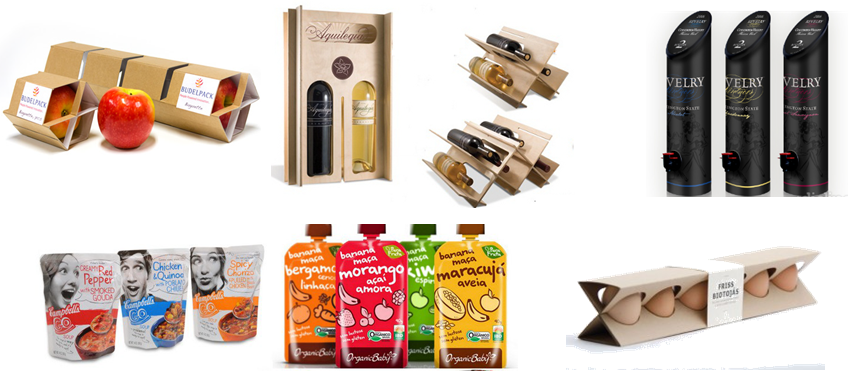Is your packaging efficient?
Packaging is the first means by which consumers interact on supermarket shelves before choosing a brand and consequently the only tool to pique consumers’ attention within a few seconds and influence their final purchasing decision. So what are those steps to be followed by the brands owners to promote efficient packaging, avoid unnecessary costs and attract prospective buyers?
>Conducting thorough market research and consumer trends
Market research is the first and necessary step for any business that wants to design and provide an effective and attractive solution to its customers. The collection of crucial information will lead to the design of a package that will communicate efficiently with the consumer, differentiate the product from the rest of the shelf and contribute to cost reduction that would arise from a return or product recall. Such information is:
–Demography data
-Needs, preferences and desires of the target groups and their consumption patterns
-Political, economic, technological and social conditions and market trends
-The current regulatory framework to which products must comply
>Materials testing
 Material testing is the second step for creating an efficient packaging and can provide the necessary information which in conjunction with market research and consumer trends lead to the development of samples of various materials and sizes that will help in the production of the final package with the following characteristics:
Material testing is the second step for creating an efficient packaging and can provide the necessary information which in conjunction with market research and consumer trends lead to the development of samples of various materials and sizes that will help in the production of the final package with the following characteristics:
– It is resistant to external factors such as pressure, temperature and humidity, and therefore maintains the products intact and unchanged throughout the supply chain and up to consumption by the end user satisfying buyers, distributors and warehousemen.
– Reflects the actual experience of buyers from the selection from the shelf to the final use and even during 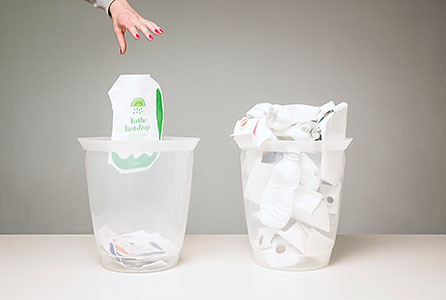 disposal or reuse, thus offering to consumers an enjoyable and functional solution throughout product lifecycle and after that.
disposal or reuse, thus offering to consumers an enjoyable and functional solution throughout product lifecycle and after that.
In this way you can avoid the cost of creating and placing defective products on the market, generate customer dissatisfaction and create costly actions such as packaging redesign and purchase of new materials.
>Use of fewer or lighter materials
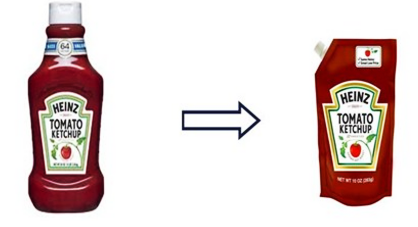 It is an increasingly popular approach in the packaging industry worldwide, and results in significant savings on materials, energy, and by extension of a company’s production costs. Moreover, the use of fewer or lighter materials facilitates stacking procedures, palletopoiisis and transportation, thus contributing to both time saving and cost saving and convenience. Moreover, it helps to improve the ecological footprint of the business due to the reduction of packaging waste. Examples of this trend is the proliferation of lightweight plastic bottles instead of the glass ones for the bottling of drinks especially water and soft drinks, or the use of flexible plastic pouch type packaging over rigid in the food industry and also the adoption of lighter opening/closure systems (caps) on product packaging.
It is an increasingly popular approach in the packaging industry worldwide, and results in significant savings on materials, energy, and by extension of a company’s production costs. Moreover, the use of fewer or lighter materials facilitates stacking procedures, palletopoiisis and transportation, thus contributing to both time saving and cost saving and convenience. Moreover, it helps to improve the ecological footprint of the business due to the reduction of packaging waste. Examples of this trend is the proliferation of lightweight plastic bottles instead of the glass ones for the bottling of drinks especially water and soft drinks, or the use of flexible plastic pouch type packaging over rigid in the food industry and also the adoption of lighter opening/closure systems (caps) on product packaging.
It should be clarified that the use of fewer or lighter packaging materials do not imply lower product protection. In contrast, it preserves appropriately the contents of the package with a greener, more creative and innovative way.
>Use of renewable / recyclable materials
Consumers worldwide are becoming more environmentally conscious and choose packaging that is 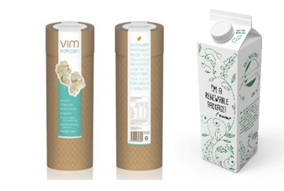 environmentally friendly. Indicative, according to a survey (Asia Pulp & Paper, 2014) 42% of American consumers are willing to pay higher prices for green packaging, while 56% would like to see more such packages on shelves. It should also underlined that, the use of biodegradable or recyclable packaging materials is an economic alternative and contributes to the reduction of waste disposal costs for the company, contrary to the original materials some of which are still based on oil. This is of great importance if we consider that, several countries such as Germany, England and the United States have enacted strict laws to manage consumer product waste.
environmentally friendly. Indicative, according to a survey (Asia Pulp & Paper, 2014) 42% of American consumers are willing to pay higher prices for green packaging, while 56% would like to see more such packages on shelves. It should also underlined that, the use of biodegradable or recyclable packaging materials is an economic alternative and contributes to the reduction of waste disposal costs for the company, contrary to the original materials some of which are still based on oil. This is of great importance if we consider that, several countries such as Germany, England and the United States have enacted strict laws to manage consumer product waste.
>Separation between necessary and optional components in the package
There are features in packing whose cost is higher than the real added value. It therefore necessary to identify and remove them. Some indicative questions that need to be addressed are the following: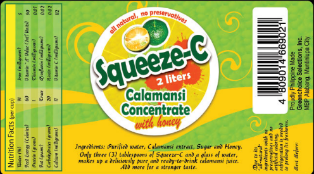
–Are actually all information contained in the packaging necessary? Priority should be given to information describing the product and inform as much as possible consumers, without taking up a lot of space
–Should we use black & white printing to make a difference, instead of full color printing?
-Is a photograph of the product on the box enough or do we need to incorporate a transparent window in order to facilitate consumers examine the product?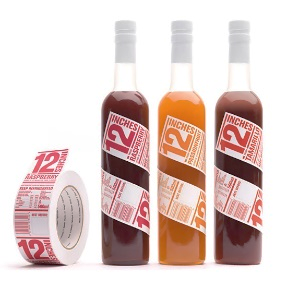
-Can some information be printed directly onto the package or do we need to cite them onto the label?
Generally, both technical features and graphic elements should be carefully chosen so that they blend harmoniously and complement each other. This will result in the creation of a functional and simultaneously aesthetic package that offers a pleasant shopping experience to the end user.
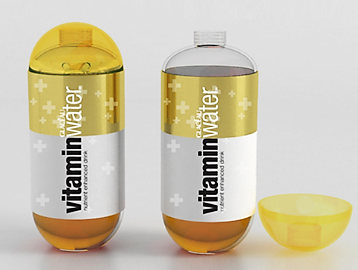 Overall, the creation of an efficient packaging is a priority for any business that wants to attract potential buyers and increase its profitability. However, efficient packaging does not imply the least possible cost for the brand owner. On the contrary, it should ensure the integrity of the product from the production to the final disposal from the customer, facilitate the transfer and storage procedures, entail environmental footprint and achieve a balance of functionality and elegance.
Overall, the creation of an efficient packaging is a priority for any business that wants to attract potential buyers and increase its profitability. However, efficient packaging does not imply the least possible cost for the brand owner. On the contrary, it should ensure the integrity of the product from the production to the final disposal from the customer, facilitate the transfer and storage procedures, entail environmental footprint and achieve a balance of functionality and elegance.
References : Mary Kerstin Hassiotis (2015), Jen A. Miller (2015), www.packworld.com, www.packagingdigest.com, www.mckinsey.com, www.packaginginnovation.com, www.iimm.org, www.inboundlogistics.com, howtobuypackaging.com

